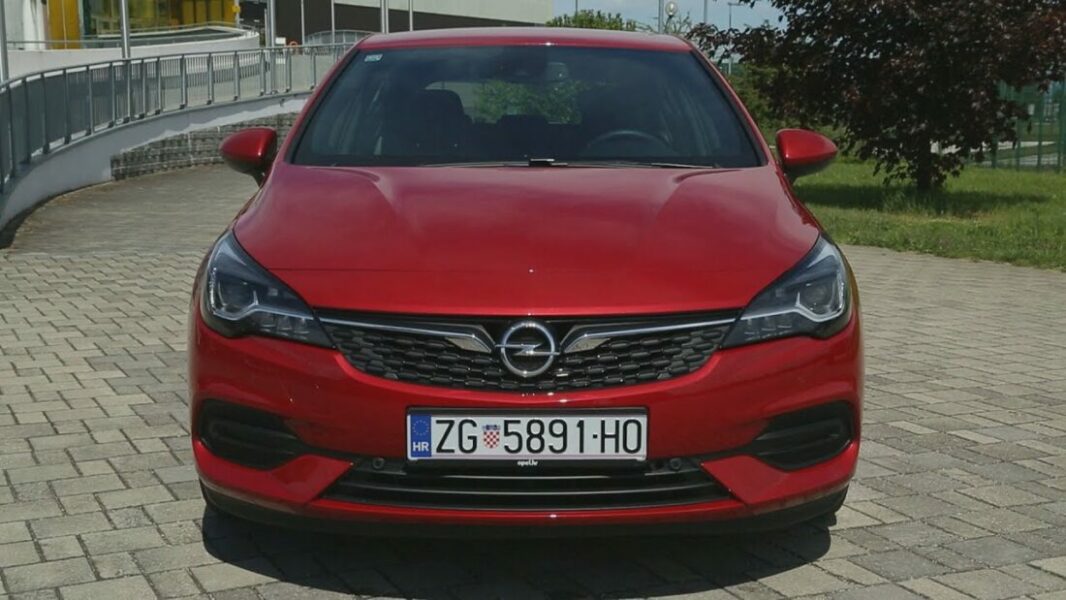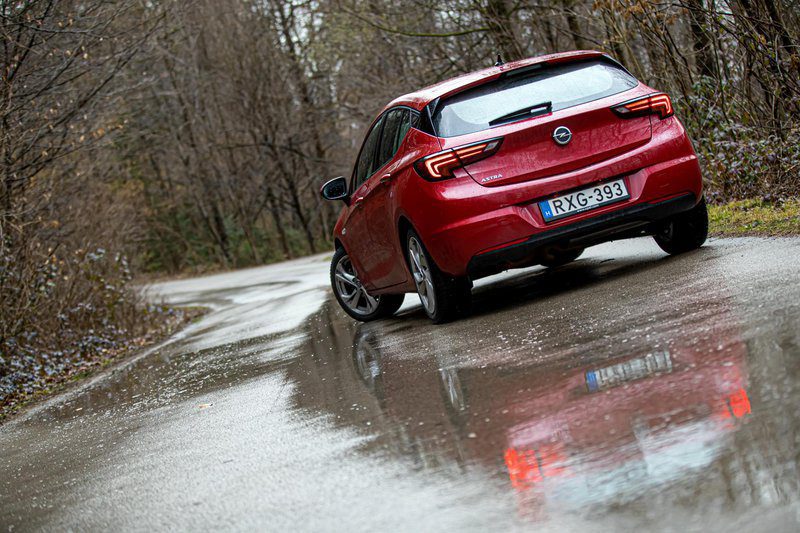
Short test: Opel Astra 1.2 Turbo GS LINE // Last Astra
Don't be fooled by the name. Opel does not even think about stopping production of the modelwho, together with their predecessor Kadett, have played such an important role in the history of the brand. Astra will continue to play the role of Opel's flagship in the compact car class, but next, 12th generation Kadetta (brand fans will understand), thanks to the merger with the PSA group, it was created on a completely new, mainstream PSA platform.
Given the life expectancy of the current Astra, we can conclude that a new generation of Astra is just around the corner. Therefore, the word "last" is used in the title as a metaphor - the last is completely Opel Astra.
Because Opel even before they merged with PSA, has already thoroughly renovated the current version of the Astra, which appeared on the market at the end of 2015., it made sense to complete the renovation and breathe a fair amount of freshness into the Astra over the past few years.

Compared to the previous generation, the new Astra is significantly lighter, which, combined with the new suspension and wheel suspension configurations, is mainly reflected in the lighter and more agile Astra. If you choose the right engine, you can also expect a very dynamic ride.
Along with the update, the Astra also received new turbocharged three-cylinder petrol engines, which are partly the result of the development work of the PSA Group. The test Astro was powered by a 1,2-liter three-cylinder engine that sits in the mid-range with 130 horses. The engine is lively enough and, like most three-cylinder engines, exhibits a lot of will to spin, but for a big smile on your face, it should spin about 500 rpm faster. Below the line, he prefers a quieter and more economical ride than pushing.... This is further bolstered by a six-speed manual gearbox, which resisted the quick and decisive shifting that the three-cylinder turbo requires in dynamic driving while driving (the test car was brand new).
I also remembered the Astro at the expense of the gearbox, especially after the extremely long second and third gears, which seem too long in terms of the displacement and responsiveness of the turbocharged three-cylinder. This is especially noticeable over long periods of time when driving out of tight corners or tight serpentines, when a slightly lower gear ratio can provide more grip and acceleration in second and third gear.
In addition to the new drive technology, the farewell refurbishment also brought an expressive freshness to the interior and exterior. Equipment packages have also been redesigned. Now there are only three of them (Astra, Elegance and GS Line)., which does not mean that the Astra is not deprived of anything. All three packages are very specific, meaningful and varied, and there is a longer list of optional accessories. The GS Line equipment that filled the interior of the test Astra is very impressive and undoubtedly follows the spirit of the almost forgotten 80s and 90s, when the acronym GS and its sequel to Opel were the highlight of the proposal. Then, of course, there were motor proposals, but today everything is a little different.

To begin with, it is worth mentioning the overall appearance of the cabin, which, in combination with the GS Line equipment for this class of cars, surpasses the average in both appearance and feel. If it weren't for all the goodies of top-class equipment, the GS Line package is worth paying extra for an excellent driver's seat that is automatically heated, ventilated, electrically adjustable, has an adjustable side handle, seat extension and lumbar massage support. Unlike the slightly older Opel, the new Astra has very well thought out ergonomics. and I am confident that the Astra with this equipment will score above average in benchmarks despite the years it has shown excellent driving performance.
Only after all of the above is clear will those who drive the Astro start to admire goodies like heated steering wheel, heated windshield, high-resolution rearview camera, parking assist, proximity key and near-perfect range of systems. assistance and safety, including road sign recognition, emergency braking, lane, active radar cruise control and of course, excellent LED matrix headlights.
Even when it comes to connectivity and the rest of the digitalisation, Astra makes no secret that it is following fashion trends.... The Central Information Display is additionally integrated with a digital center meter that allows the driver to customize the display of various data as they wish, but the best part is that the controls and settings together are very simple and intuitive.
Opel Astra 1,2 Turbo GS LINE (2019) - price: + XNUMX rubles.
Basic data
| Sales: | Opel Southeast Europe Ltd. |
|---|---|
| Test model cost: | 30.510 € |
| Base model price with discounts: | 21.010 € |
| Test model price discount: | 30.510 € |
| Calculate the cost of auto insurance | |
| Power: | 96kW (130 KM) |
| Acceleration (0-100 km / h): | 9,9 with |
| Maximum speed: | 215 km / h |
| Mixed flow ECE: | 4,3l / 100km |
Technical information
| engine: | 3-cylinder - 4-stroke - in-line - turbocharged petrol - displacement 1.199 cm3 - maximum power 96 kW (130 hp) at 5.500 rpm - maximum torque 225 Nm at 2.000 rpm |
|---|---|
| Energy transfer: | The engine is driven by the front wheels - a six-speed manual transmission. |
| Capacity: | top speed 215 km/h - 0-100 km/h acceleration 9,9 s - average combined fuel consumption (ECE) 4,3 l/100 km - CO2 emissions 99 g/km |
| Mass: | empty vehicle 1.280 kg - permissible total weight 1.870 kg |
| External dimensions: | length 4.370 mm - width 1.871 mm - height 1.485 mm - wheelbase 2.662 mm - fuel tank 48 l |
| Box: | 370 1.210-l |
evaluation
With the launch of the latest Astro model, Opel has once again, and only now, proved that it can also create a good and attractive compact family car almost entirely on its own. Their distinctly "German" sense of ergonomics, agility and unobtrusive styling will certainly add a lot of positives to the partnership with PSA.
We praise and reproach
driving performance
hardware, feeling inside
fuel consumption
front wiper blade
dew tendency
(too) long second and third gear
start / stop system - after engine ignition for thigh armor
